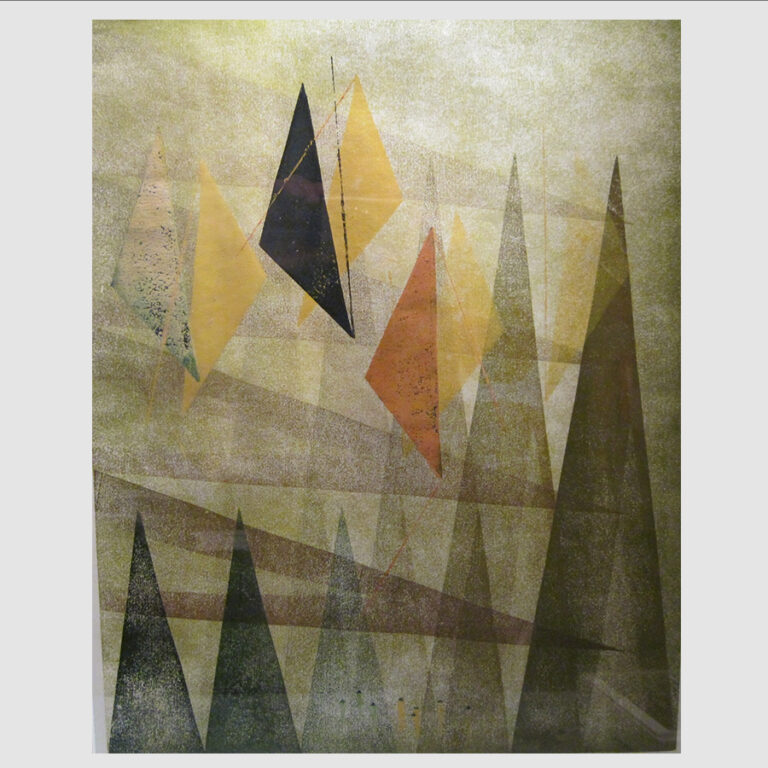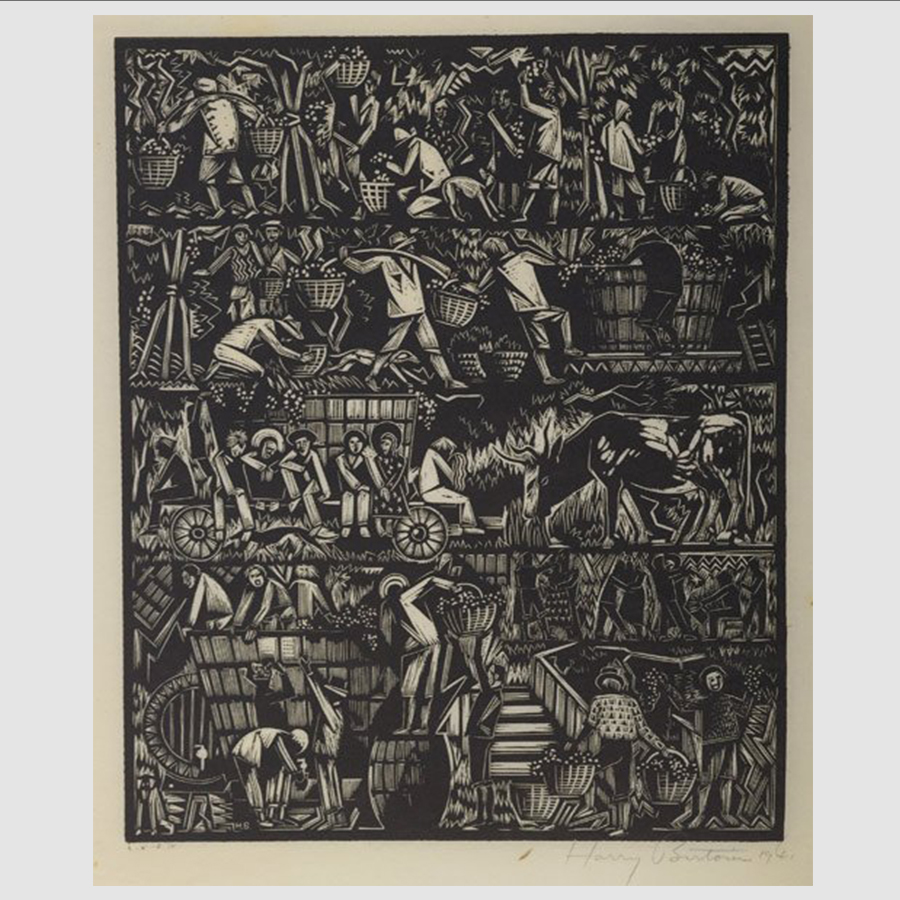
Two-dimensional work was a consistent part of Bertoia’s practice throughout his career. Early drawings, woodcuts, and paintings were ultimately superseded by the monotype, a method of printmaking that produces singular images and provided the artist with an essential way to explore line, color, and form.
Bertoia made thousands of monotypes; he loved the quickness and spontaneity of the medium. While sculptures took weeks or months to produce, monotypes could come to life in mere minutes. The process typically involved inking a glass surface, placing paper over the inked surface, and then creating designs with fingers or hand tools from the backside of the paper. Like the Sonambient sculptures, each monotype is unique; though Bertoia would often return to an idea or form, no two monotypes are identical. These works also vary greatly over the course of his career, ranging from colorful abstractions made in the 1940s to the sculptural ideas he experimented with in the 1950s, 60s, and 70s.






